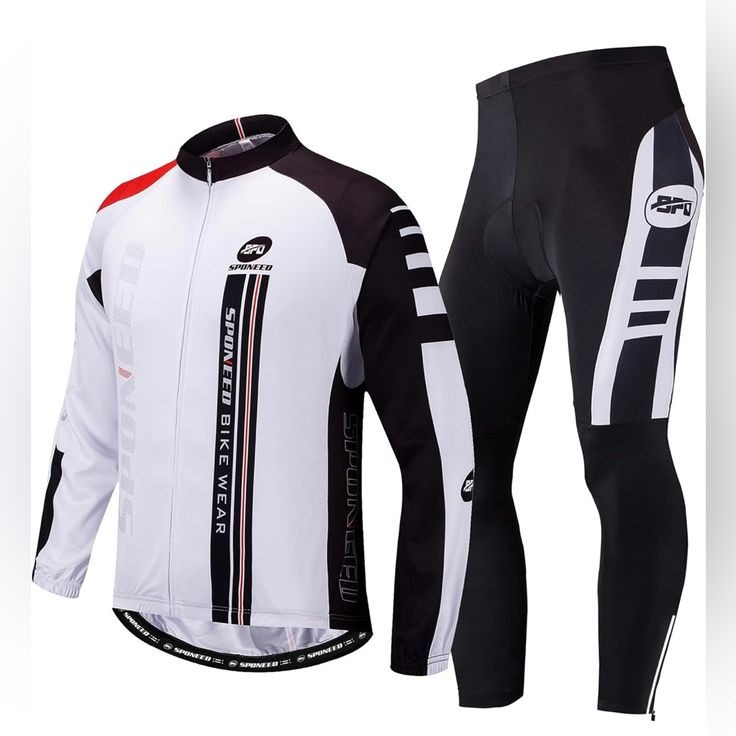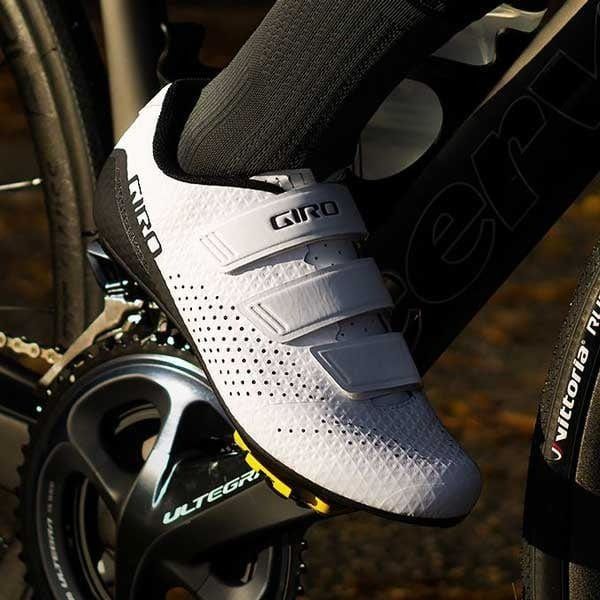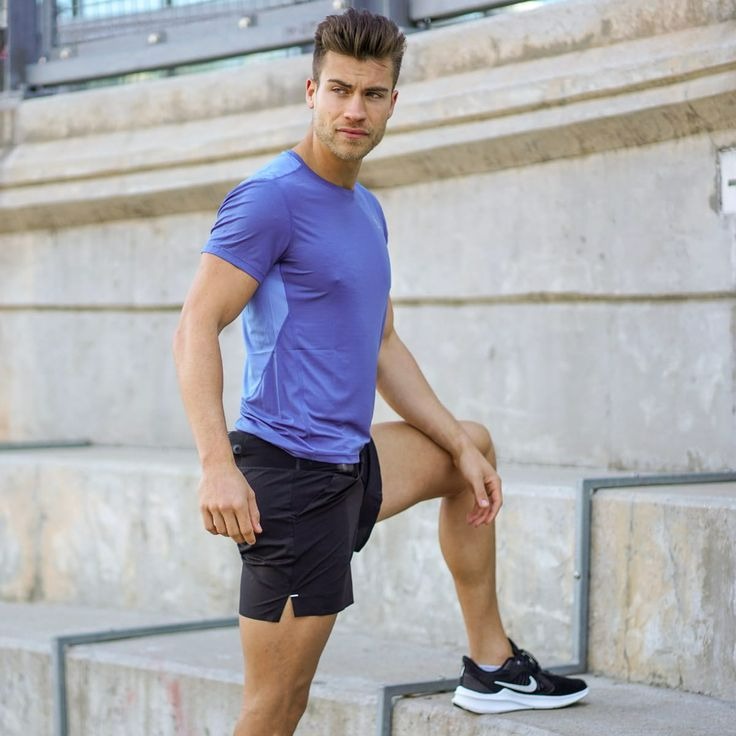The Importance of Eco-Friendly Cycling Gear
Choosing eco-friendly cycling apparel is vital for several reasons. First and foremost, it reflects a rider’s commitment to environmental stewardship. Wearing gear made from sustainable materials reduces waste and minimizes the impact on the planet’s resources. It decreases the ecological footprint associated with the manufacturing processes of traditional cycling gear.
Opting for green cycling gear can also promote a sense of community. Riders wearing sustainable apparel often encourage others to make greener choices. This can lead to a positive chain effect. More cyclists choosing eco-friendly options reduces overall environmental damage.
Furthermore, eco-friendly cycling gear is often made with fair labor practices. Choosing these items supports ethical treatment of workers in the industry. It helps ensure that those who make our clothes work in safe conditions for fair wages.
Finally, eco-friendly cycling gear can inspire innovation. As demand for green products grows, companies develop new, sustainable materials. These materials are often better for our environment and can lead to improved cycling apparel overall.
In summary, choosing eco-friendly cycling apparel is crucial for protecting the environment, promoting ethical labor practices, and spurring innovation in cycling gear production. Cycling enthusiasts can make a significant impact on both the sport and the world by embracing sustainability in their gear choices.

Key Features of Sustainable Cycling Clothing
When searching for sustainable cycling apparel, certain features can guide your choice. These are markers of eco-friendliness and quality.
Materials
The core of eco-friendly gear lies in its materials. Look for organic cotton, bamboo fibers, or recycled polyester. These materials reduce environmental harm. They need less water and energy to produce than traditional fabrics.
Durability
Sustainable clothing should last long. It resists wear and tear from frequent use. This means less frequent replacements and less waste.
Ethical Production
True sustainable apparel brands ensure fair labor conditions. They often have certifications like Fair Trade to back up their claims.
Low-Impact Dyes
Eco-friendly cycling clothing uses dyes with a reduced environmental footprint. These dyes often avoid harmful chemicals.
Minimal Packaging
Environment-conscious brands use minimal and recyclable packaging. It’s part of their commitment to reducing waste.
Biodegradability
Finally, consider if the apparel is biodegradable. At the end of its life, biodegradable fabrics can decompose without polluting the environment.
By choosing cycling apparel with these features, you support sustainable practices. You also ensure your cycling gear aligns with your environmental values.

Top Eco-Friendly Cycling Apparel Brands
Eco-conscious riders have many choices when it comes to brands that offer sustainable cycling apparel. These brands focus on ethical production practices, use of recycled materials, and durability, which can make your riding experience both comfortable and environmentally responsible. Here are some of the leading eco-friendly cycling apparel brands:
Patagonia
Known for its commitment to sustainability, Patagonia offers high-quality cycling gear. They use recycled materials and ensure fair labor practices.
Vaude
Vaude stands out with its eco-friendly production and Green Shape label. Their cycling apparel is durable, functional, and made with the planet in mind.
Rapha
Rapha combines style with sustainability, offering recycled-material products. They promote durability and reduce the need for frequent replacements.
PEARL iZUMi
This brand is committed to social responsibility and environmental care. Their cycling apparel often features eco-friendly fabrics and a promise of longevity.
REI Co-op
REI Co-op’s cycling gear focuses on sustainability. Their products come with a guarantee of ethical sourcing and minimal environmental impact.
Supporting these brands not only helps reduce environmental damage but also promotes a culture of conscious consumerism in the cycling community. Riders can feel good about their purchases, knowing they’re aiding ethical manufacturing and the reduction of waste. When purchasing your next cycling apparel, consider these top eco-friendly brands to make a positive impact on the environment and support sustainable practices in the industry.

How to Choose the Right Eco-Friendly Cycling Apparel
Selecting the right eco-friendly cycling apparel requires consideration of several factors. It’s not just about the material, but also the ethics behind the production, the lifespan of the clothing, and the company’s environmental policies. Here’s how you can make the best choice for both the environment and your cycling experience:
Evaluate Material Sustainability
Start by assessing the materials. Are they organic, recycled, or biodegradable? Make sure the cycling apparel uses resources like organic cotton or recycled polyester. These materials have a lower impact on the environment.
Check for Durability
Quality matters. Pick gear that withstands many rides. Durable apparel means buying less often, which cuts down on waste. Look for strong stitching and quality fabric.
Research the Brand’s Ethical Practices
Find out if the brand follows fair labor practices. Brands with certifications such as Fair Trade are often a good pick. They care for their workers as much as the environment.
Examine Dye Processes
Choose clothing with low-impact dyes. These dyes should be free of harsh chemicals that harm the planet. They should also be safe for your skin.
Consider Packaging
Look for brands that use minimal, recyclable packaging. Less packaging reduces waste, staying true to eco-friendly principles.
Think End-of-Life
Does the clothing biodegrade? At the end of its life, eco-friendly apparel should not linger in landfills. Consider the full lifecycle of your purchase.
Making the right eco-friendly choice for your cycling apparel involves deep consideration of these elements. By doing so, you support sustainable practices and remain true to your environmental values while enjoying your passion for cycling.
The Role of Recycled Materials in Cycling Gear
Recycled materials are becoming increasingly significant in the production of eco-friendly cycling apparel. By repurposing discarded fabrics and plastics, manufacturers can reduce waste and conserve natural resources. Not only does this approach promote a circular economy, but it also sets a precedent for the future of sustainable sports gear.
Using recycled materials, cycling gear companies can lower their carbon footprint, often measured in reduced greenhouse gas emissions during production. This shift is essential in the battle against climate change. Recycled polyester, made from used plastic bottles, is a popular choice among eco-conscious brands. It offers the same performance qualities as virgin polyester but with less environmental cost.
Moreover, the incorporation of recycled materials answers a growing demand from consumers for sustainable products. Eco-minded riders are looking for apparel that aligns with their values. They want gear that’s not only functional but also reflective of their commitment to the planet.
Finally, cycling apparel produced with recycled materials doesn’t compromise on quality or comfort. Advances in textile technology mean that these fabrics can be as soft, stretchy, and durable as those made from new fibers. Therefore, cyclists do not have to sacrifice performance or aesthetic for sustainability.
In conclusion, recycled materials hold a central role in the development of eco-friendly cycling apparel. They represent an important step toward a more sustainable industry where the environmental impact is a key consideration in product design and manufacturing.
Maintaining and Caring for Your Eco-Friendly Cycling Apparel
To ensure the longevity and performance of your cycling apparel, proper maintenance is key. Here’s how you can care for your eco-friendly gear effectively:
Wash with Care
Always follow the washing instructions. Use eco-friendly detergents and avoid harsh chemicals. Cold water is best to conserve energy.
Avoid Frequent Washing
Wash your gear only when needed. This reduces water usage and wear on the fabric.
Air Dry When Possible
Skip the dryer. Air drying saves energy and is gentler on your apparel.
Repair, Don’t Replace
Minor damage? Repair it instead of buying new gear. This reduces waste and prolongs your apparel’s life.
Store Properly
Keep your cycling apparel in a cool, dry place. Avoid plastic bags as they can trap moisture.
Recycle or Donate
If you outgrow or no longer need your clothing, recycle it or donate to someone else.
By taking these steps, you’ll minimize your environmental impact while keeping your cycling apparel in top shape. Remember, the way you maintain your gear can make a significant difference in its ecological footprint.
The Impact of Eco-Friendly Apparel on Cycling Performance
When considering eco-friendly cycling apparel, performance is a key factor. Many might wonder if choosing sustainable options means sacrificing efficiency or comfort. However, advancements in eco-friendly materials have ensured that environmentally conscious clothing can meet, and sometimes even exceed, the performance standards of conventional gear.
Eco-friendly apparel impacts cycling performance in these ways:
Comfort
Sustainable materials can offer superior breathability and moisture-wicking properties. Fabrics like organic cotton and bamboo are soft against the skin, enhancing comfort on long rides.
Aerodynamics
Certain eco-friendly fabrics are designed to reduce drag. They fit close to the body, maximizing aerodynamics and aiding speed.
Temperature Regulation
Natural and recycled fibers often provide good insulation. This keeps riders warm in cold weather and cool in heat, contributing to better endurance.
Longevity
Durability of eco-friendly gear means maintaining optimal cycling performance over time. High-quality materials resist wear and tear, preventing the need for frequent replacements.
Health and Safety
Apparel with low-impact dyes is less likely to cause skin irritation. This ensures your focus remains on the ride, not on discomfort.
By selecting eco-friendly apparel, cyclists do not have to compromise. They gain the dual benefits of supporting the environment and enjoying high-performing gear. As more riders realize the positive impact of sustainable apparel on their cycling experience, the demand for eco-friendly options is likely to grow. This can drive further innovation in the industry, leading to even more advanced eco-friendly cycling gear in the future. Riders can wardrobe themselves in eco-conscious gear with confidence, knowing that they are making a choice that benefits both the planet and their cycling performance.
Future Trends in Sustainable Cycling Fashion
The trend towards sustainable cycling fashion is gaining momentum as environmental awareness increases. In the near future, we can expect several advancements and shifts in this area. Here are some potential future trends in sustainable cycling apparel that may shape the industry:
Innovative Sustainable Materials
Researchers are always finding new ways to create materials that are kinder to the environment. Soon, we might see more apparel made from novel, sustainable materials. These might include fabrics derived from algae or other biomass. The focus will be on materials that have a lower environmental impact and are readily renewable.
Circular Production Models
Circularity is a rising trend. This means designing products with their end-of-life in mind. More brands may adopt business models that encourage recycling and repurposing of apparel. This can reduce waste and prevent excess production, supporting a more sustainable fashion cycle.
Technology-Enhanced Recycling
Technology will enhance the way cycling apparel is recycled. Improved methods will make it easier to break down and reuse the fibers from old gear, even from mixed-fabric items that currently are tough to recycle. We can anticipate more advanced recycling programs offered directly by cycling brands.
Transparency in Supply Chains
Consumers demand transparency about where and how their clothing is made. Brands will likely share more about their supply chains. By using blockchain or other tracking technologies, they can prove their eco-friendly claims, building trust with customers.
On-Demand and Customized Production
To reduce waste, we might see a shift to on-demand production, where items are made as ordered. This can minimize overstocking. Customization will not only cater to personal style but will also ensure a perfect fit, increasing the lifespan of each piece of cycling apparel.
Eco-Performance Fabrics
Performance in eco-friendly cycling gear will continue to evolve. The development of new eco-performance fabrics will ensure sustainability does not compromise quality or the athletic demands of cyclists.
These future trends reflect a commitment to innovation and responsible consumption within the cycling apparel industry. Both brands and consumers play crucial roles in supporting sustainable practices. We’ve seen a promising start, and the trends suggest an even more eco-conscious future for cycling fashion.

